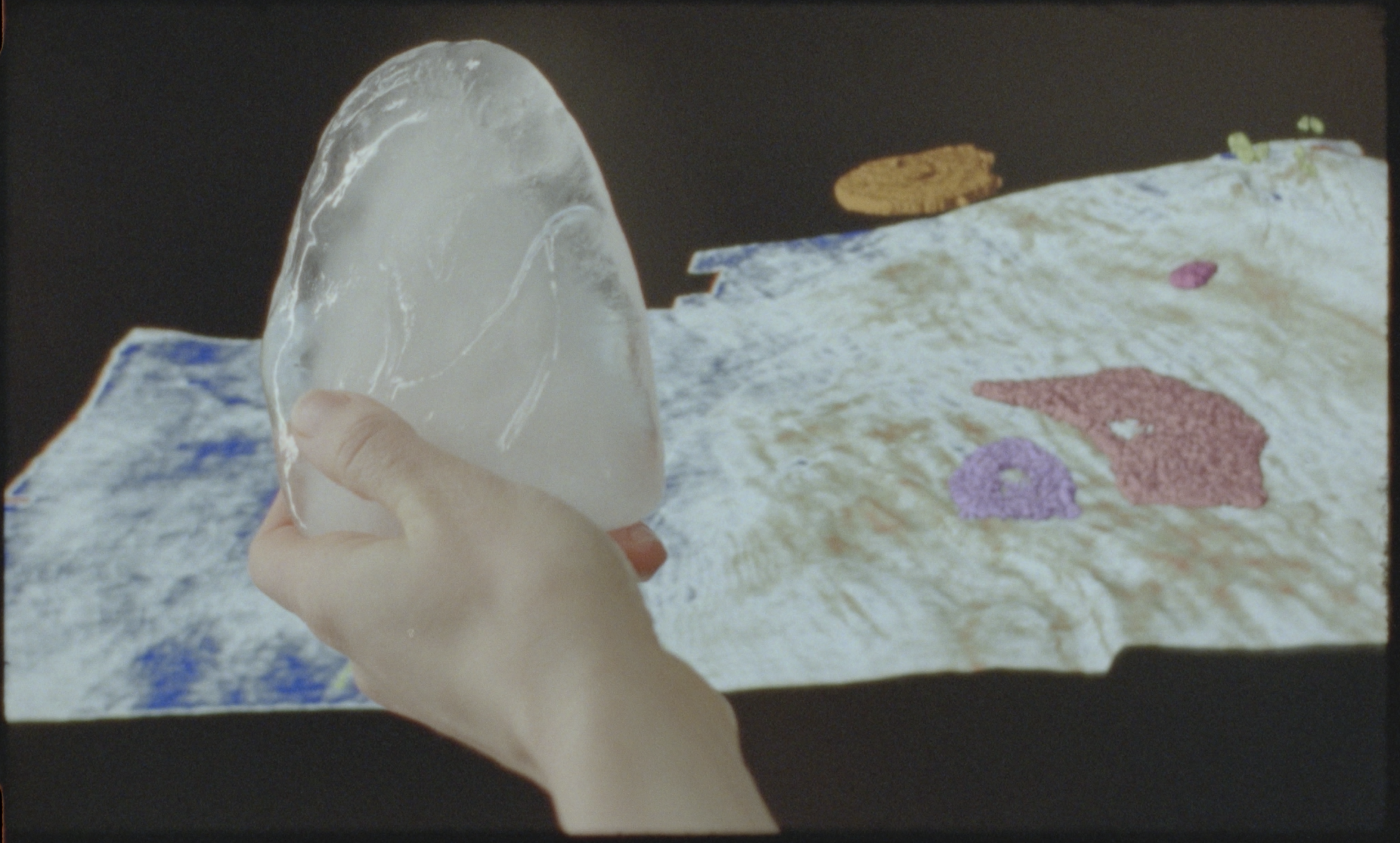
© Julia Borderie & Eloïse Le Gallo, Ondes gelées, 2023
Julia Borderie & Eloise Le Gallo
Who are they?
Since 2016, Julia Borderie & Eloïse Le Gallo, a duo of French artists born in 1989, put the encounter at the center of their approach by anchoring their creative process in a poetic documentary approach, between investigation and drift. Sculptures, performances and videos emerge from the collected stories as a sensitive and material memory of human encounters and trace singular trajectories in the landscapes, questioning our relationship to water. Lately, the duo has been questioning scientific narratives and imagery by developing multiple collaborations with research laboratories.
What is their background?
Julia Borderie graduated from ENSA Paris-Cergy (2011) and UQÀM in Montreal (2015); Eloïse Le Gallo from ENSBA Paris (2013). They develop their projects during residencies: La Station (2021), Moly-Sabata (2020), Mains d’Œuvres (2019), la Cité des Arts de La Réunion (2017). Julia Borderie & Eloïse Le Gallo have presented their work at Cac La Traverse (2021), Le 18 (Marrakech, 2019) and the Venice Architecture Biennale (2018). They will integrate Le Fresnoy – Studio National des arts contemporains as a duo in 2021 to make their first short film.
What is the project of this residency?
« The Ovni residency allowed us to prepare and direct one of the three shoots of our short film that we are currently making this year as part of our second year at Le Fresnoy.
After a first week of writing and creating sculptures, we were able to shoot on a ship of the Institut de la mer off the coast of Nice, during 4 days. The residence at the hotel generously welcomed our film crew. »
As part of an agreement with Le Fresnoy – Studio National des Arts Contemporains, Julia and Eloise continue their work on water, its vibrations and its history.
Their short film with the provisional title « Ondes gélées » (Frozen Waves) marks the meeting between cinema, science and sculpture while alerting us to the climate emergency.
Synopsis
Hands manipulate forms made of ice and salt, like samples to be analyzed.
They look like pieces of rock, like models of mountainous reliefs. The
framework of the film widens: we are on board a scientific ship in the Mediterranean Sea,
above the phlegrean fields. In this volcanic area under pressure, the Eurasian and African plates
Eurasian and African plates meet. The geologists send sound waves of different frequencies into the water
of different frequencies at regular intervals. They enter the heart of the geological memory
of the oceans.
The film dives into the digital underwater landscapes reconstructed thanks to this
3D seismic technique. The sound impulses guide this wandering. Probing the
of the Earth, the sound wave prolongs the human vision, at the same time tool of transmission
and vector of information. The voices of scientists analyzing or collecting data
scandalize this dive. The enumerations of geological vocabulary gives a look of
concrete poetry.
Thousands of kilometers away, the alpine glaciers drip. Notes of alpine horn
vibrate the surrounding snow-covered mountains. These landscapes are mixed with digital underwater landscapes
underwater digital landscapes: several thousand years ago, there was a proto-ocean, an alpine
Alpine Tethys. It opened up. Then the European plate sinks under the Adriatic plate
and the alpine ocean begins to close. As the subduction progresses,
the Alpine Tethys closes. Entire parts of the ocean floor will disappear in the subduction trench.
in the subduction trench. Hands choreograph these tectonic movements on the screen,
manipulate materials of various viscosities, in analogy with terrestrial materials.
As the voices of the geologists content this morphogenesis, the ice melts,
the salt disintegrates in their hands. We understand that these strange objects emerge from the 3d software
of 3d that the geologists use. These « geobodies » [geological bodies] give body to the
scientific data. Like acts of paradoxical resistance they materialize a world in
accelerated transition. These forms try to freeze time as long as they can, in the current
context of climatic emergency, where the machine is at the same time vector of vision and
loss. They are doomed to metamorphose and disappear while human hands
try to save what melts in their contact: to become ocean and to become glacier imbricated
intimately.